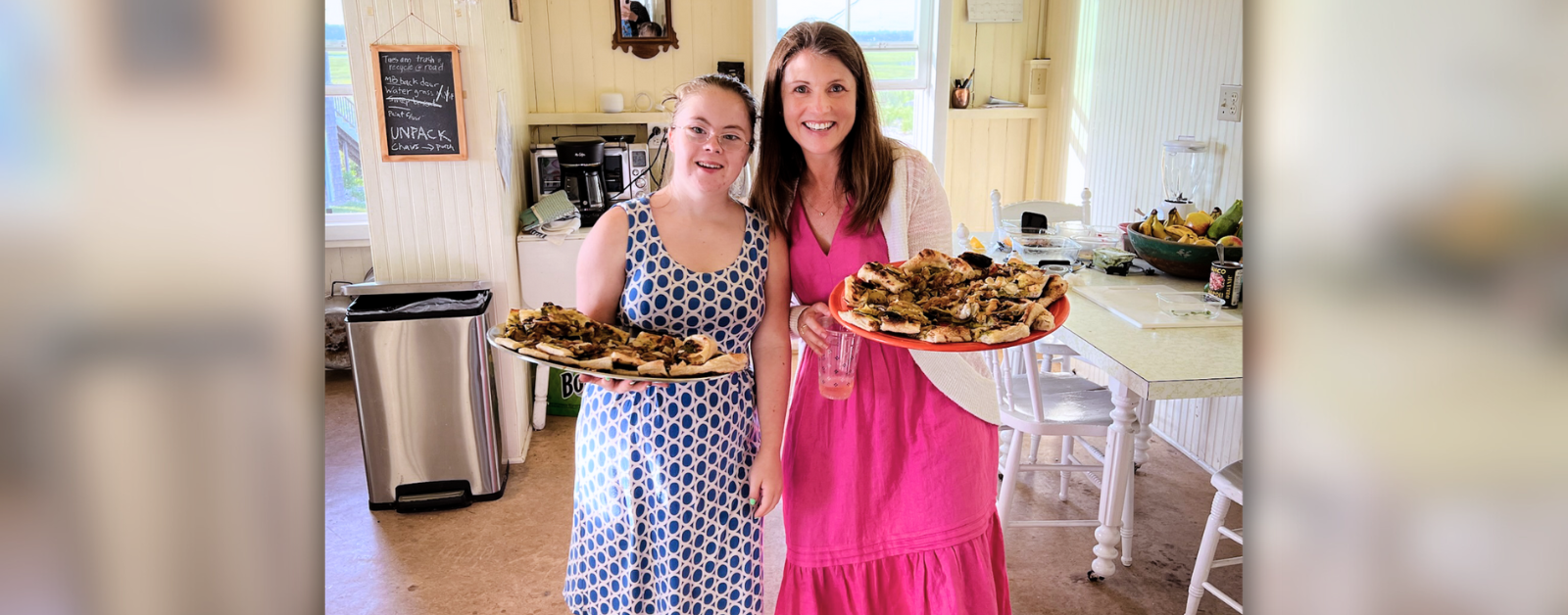I wrote a few weeks ago about the difference between exclusion, tolerance, inclusion, and belonging. Generally, when I think about belonging, I’m thinking about institutional spaces. I’m wondering whether our daughter Penny, who has Down syndrome, will be welcomed into a new social setting. I noticed, for instance, when we visited a new church and a man spoke to me about Penny but didn’t address her directly. He wanted to let me know they offered a class for teens. He wanted her to be included. And yet he didn’t try to engage with her face to face, even though she was standing by my side and answering the questions he placed to me. It seemed like his assumptions about someone with Down syndrome got in the way of welcoming her.
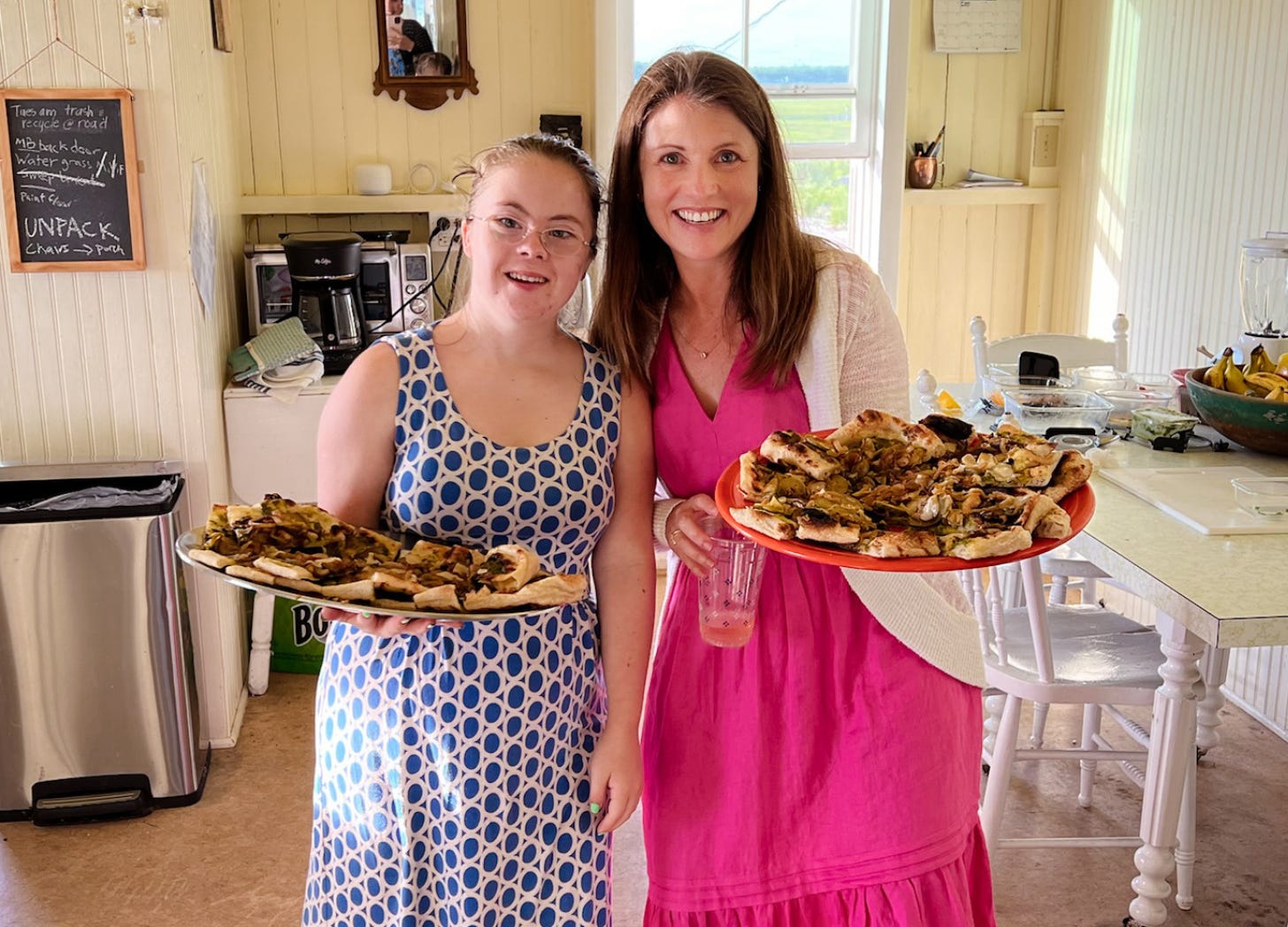
“Othering” in Families
Because I tend to think about belonging as it pertains to institutions, I haven’t always looked at families as places where we also can experience both exclusion and belonging and everything in between. But in her book, Design for Belonging, Stanford Professor Susie Wise writes that “othering” is the opposite of belonging and…
“for many of us, our first or most poignant experiences of othering are in familial spaces.”
We probably all have memories of exclusion from within our families, whether it is the “keep out” sign on our sibling’s bedroom door or being the butt of the family joke. For families affected by disability, that exclusion can take the shape of low expectations, frustration, or even separation.
Belonging in Families
And yet familial spaces can also establish a sense of belonging. If families live out belonging, then we can carry those same assumptions with us into institutions and communities.
Within my particular family, creating a sense of belonging for everyone means navigating differences in intellectual and physical ability. We also have big age differences. We were all together—three generations and three branches of the family—for the 4th of July, so it was an opportunity to practice and model belonging.
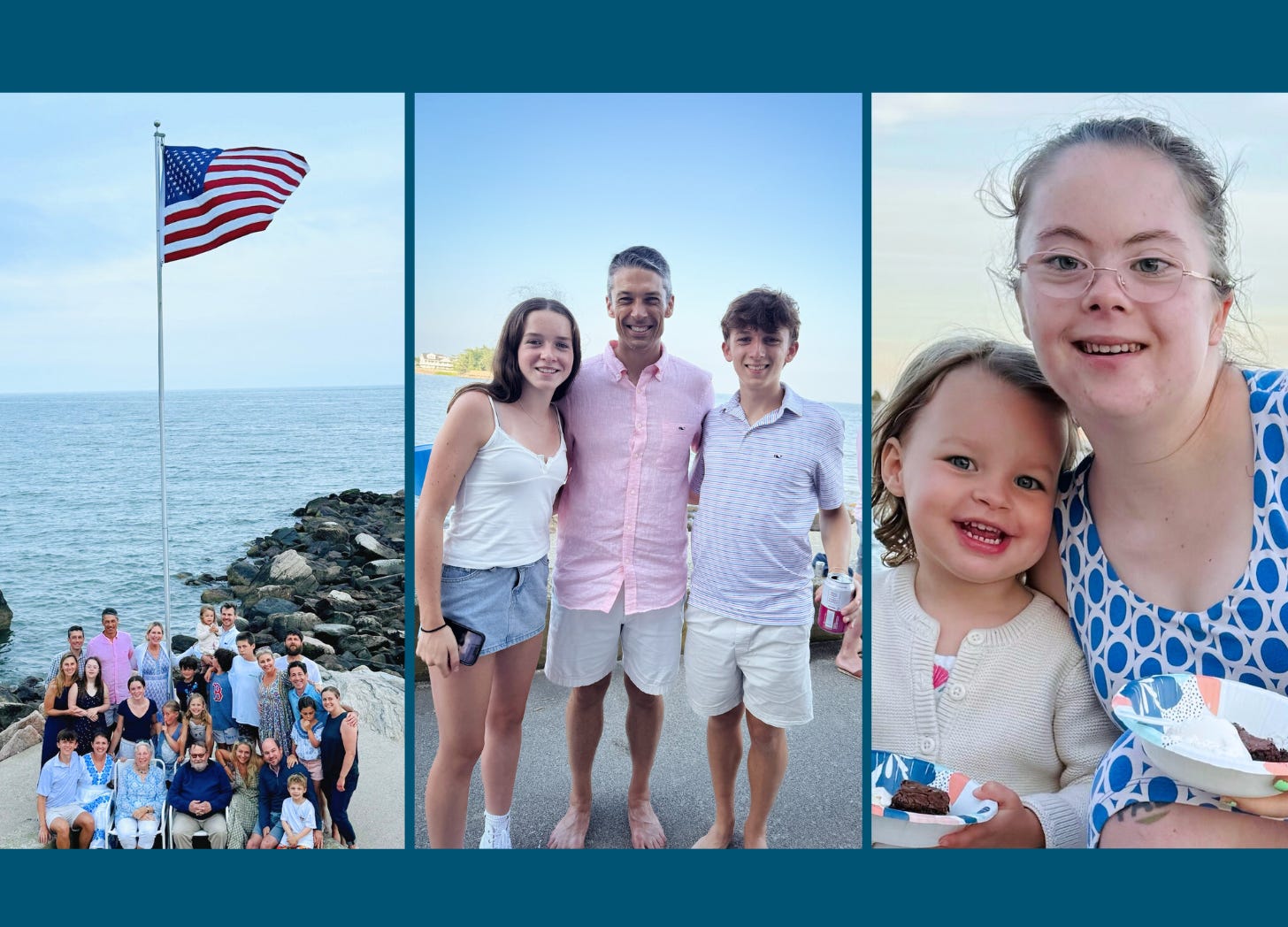
After many years of trying to work this out together, we had a few wins. Here are a few thoughts, based on our experiences, for how to create belonging as a family.
Communicate Belonging—in Activities:
Is there an activity that everyone would enjoy together that just needs some rethinking in order to make it happen?
Here are a couple of ways we planned activities with belonging in mind last week…
Family Bike Ride: We figured out a way to take a family bike ride (go here for a great video!). Penny decided years ago that she didn’t want to learn how to ride a bike, and we didn’t think too much of it. But as our kids have gotten older, the ability to bike has become more and more of a dividing line in our family, especially when we’re on vacation. This year, we got a tandem bike, and Penny enjoyed a 10-mile excursion with our family to our mutual delight. In this activity, everyone participates. Everyone belongs.
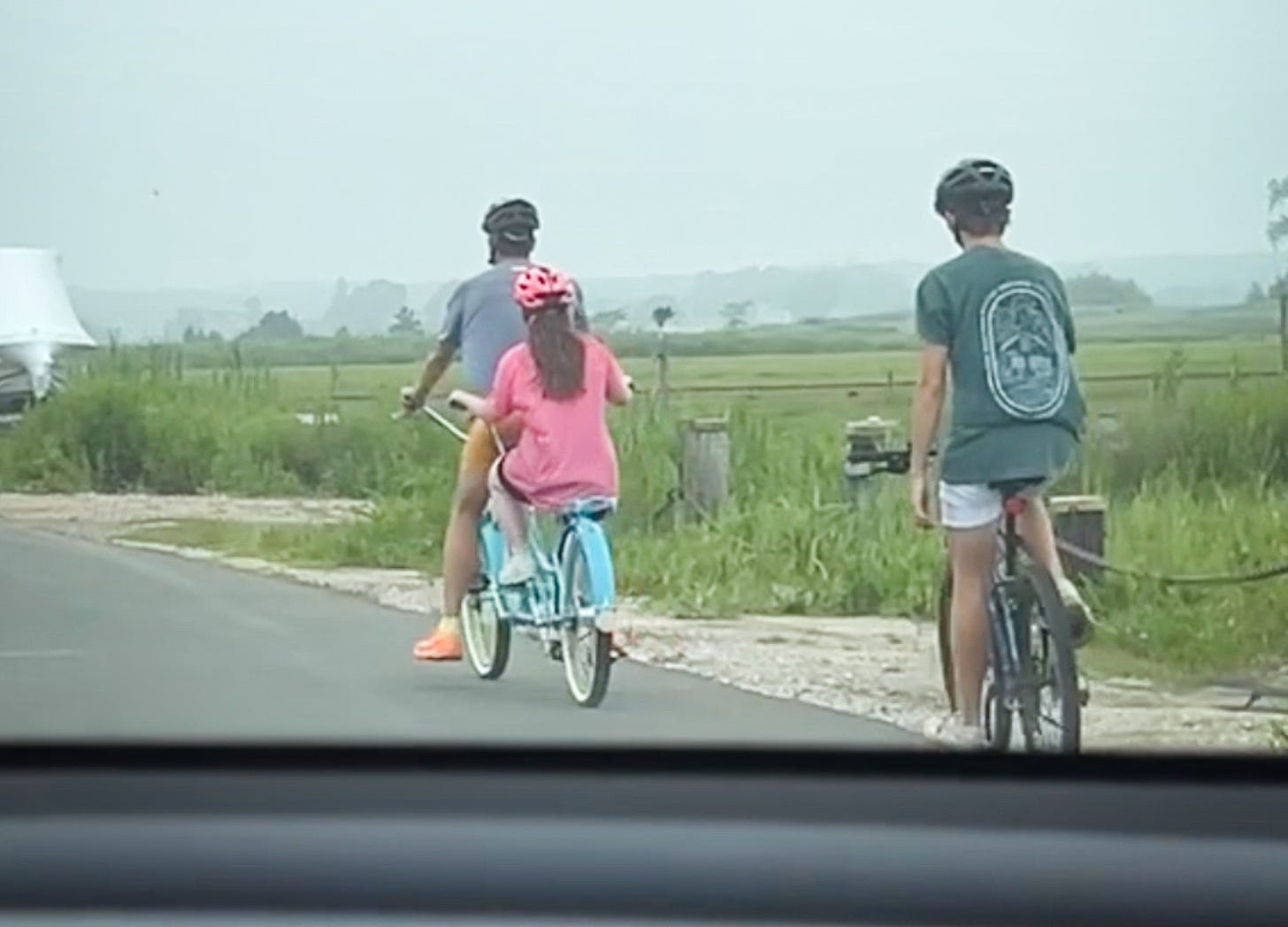
The Name Game: I wrote about this game a few years ago because it became our favorite game of 2021. (You can access the details/rules here.) What’s remarkable about this game is that everyone from a 7-year-old to a 77-year-old, from the hyperactive teenager to the bookish young adult, can enjoy it. It has competitive elements alongside collaboration. In this game, everyone participates. Everyone belongs.
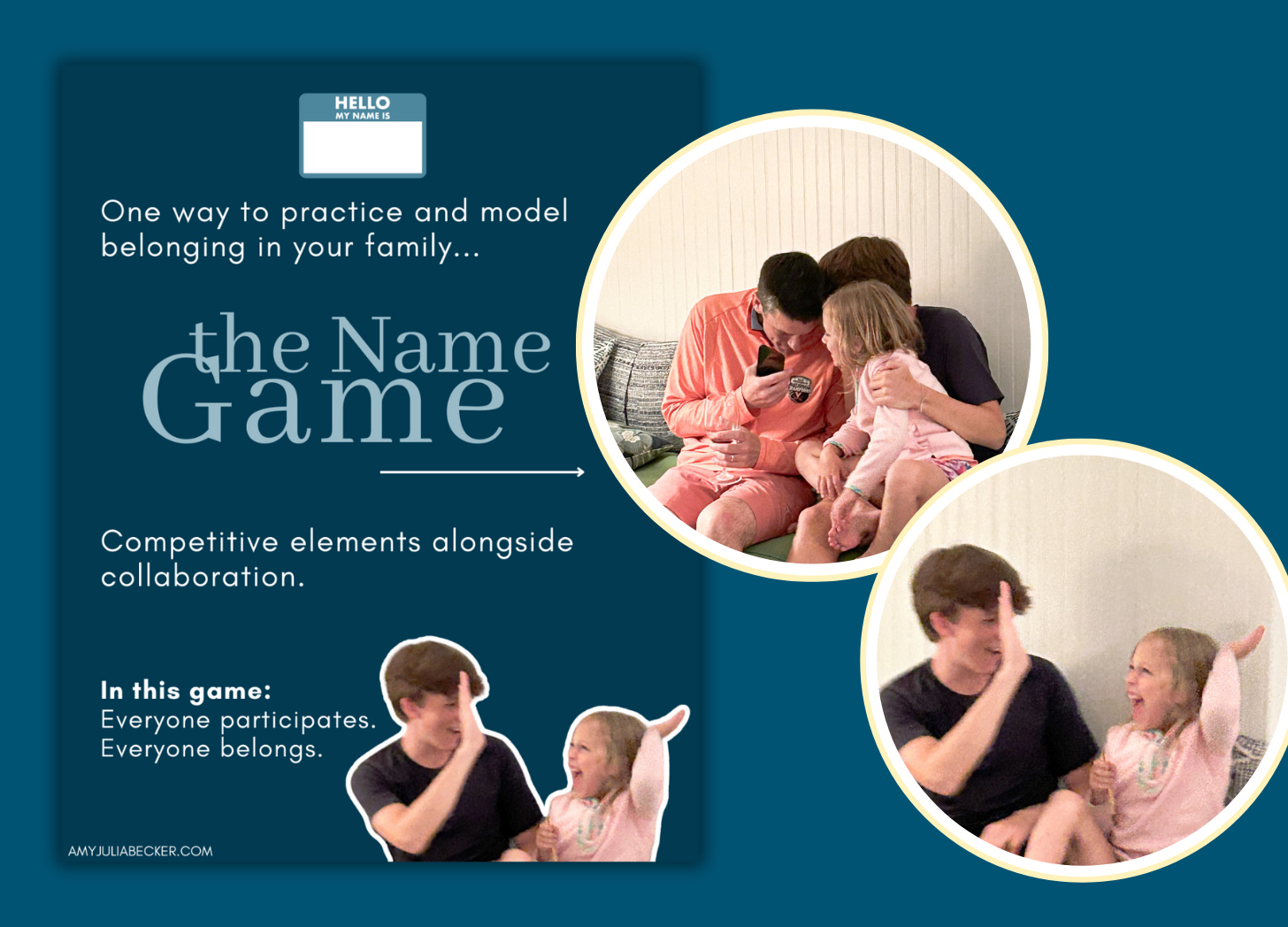
In your family, what is an activity that everyone could enjoy together? How can you rethink that activity in order to make it happen?
Communicate Belonging—Through Questions:
Ask open-ended questions that everyone can answer. Two of the questions we ask around the table are:
- What’s one word that describes your summer so far?
- What’s one thing you’ve watched or read or listened to that mattered to you in the past month?
You may have family members who don’t use words to communicate. In that case, our table questions would need to expand to welcome gestures, or they might need to change altogether.
Communicate Belonging—Through Participation:
Look for ways that everyone can help with setup or cleanup for family gatherings (even if it means that it takes longer—the point is participation, not efficiency). As Susie Wise writes, people…
“knew they belonged to whatever community they were a part of when they felt they were making a contribution.”
Communicate Belonging—Through Food and Beverages:
Provide food and beverage options that communicate that everyone belongs. Take the time to think about each person who is present. Do you have family members with food allergies or who are practicing vegans or who don’t drink alcohol?
You might not be able to create every meal in a way that is safe/welcoming for those family members, but what if you decided to prepare one meal that everyone present could eat without any concerns, simply to communicate how much it matters that they are with you and how much you all want to be with them?
A Foundation of Belonging Creates Space for More
When we create a foundation of belonging, it still allows space for one-on-one and small-group activities. For instance, we played the Name Game at our 4th of July celebration, and everyone was included. But we also enjoyed activities that weren’t for everyone. Our son, William, played Stratego with his uncle. Penny took a walk with her dad. Lots of people watched soccer together, and I opted out because I wasn’t interested. But in all of those cases, the overall experience of belonging prevented any sense of exclusion.
If you assume that everyone in your family belongs there, and then you begin to design gatherings accordingly, you will begin to discover ways to communicate that sense of belonging that still allow for individual desires and connections and particular abilities to flourish.
My hope for our family is that we continue to establish and experience the mutual benefit of belonging when we are together. And then, that we establish and experience the same in our communal and institutional spaces. I can only imagine what would happen if we assumed that everyone belongs in our classrooms and sanctuaries and offices.
Families can be a place of painful “othering.” But they also can be a beautiful place to practice and experience belonging.
I would love to hear from you. In what ways you have created or experienced belonging in your family?
MORE WITH AMY JULIA:
Let’s stay in touch. Subscribe to my newsletter to receive regular updates and reflections. Follow me on Facebook, Instagram, and YouTube and subscribe to my Reimagining the Good Life podcast.

